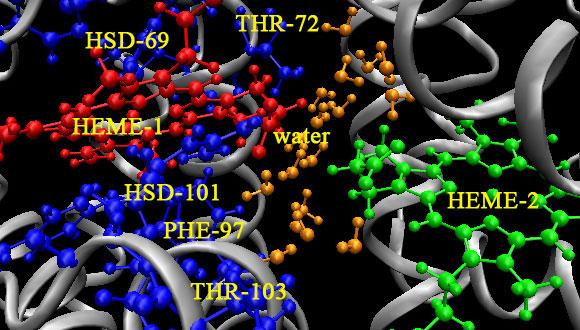Physical Chemistry Seminar: The use of EPR spectroscopy to study metal transcription factors in-vitro and in-cell
Prof. Sharon Ruthstein, Bar-Ilan University
Abstract:
Bacteria are skilled survivors in high-metal ion environments. Some metals are essential but can be detrimental above a certain concentration in the cytosol. Thus, bacteria have evolved complex processes to regulate intracellular metal homeostasis. Metal transcription factors play a role in this regulation. They respond to metal ions and control gene transcription to protect bacteria from metal-induced stress. Upon metal binding, the metalloregulator protein induces conformational changes in the DNA promoter sequence, leading to transcription initiation and subsequent transcription of genes that mediate adaptive responses to the toxicity of the targeted metal. X-ray crystallography and cryo-EM tools have provided insights into the structures of these transcription factors bound and unbound to the DNA and metal ions. However, intermediate conformations, which offer a better understanding on their mechanism of action, have not been targeted by these methods. Electron paramagnetic resonance (EPR) spectroscopy can help bridge these gaps. Our lab focuses on studying three copper-sensitive transcription factors from gram-positive and gram-negative bacteria: E. coli and P. aeruginosa CueR 1-8, M. tuberculosis CsoR 9, and S. pneumoniae CopY 10. Using variety of spin-labelling techniques and EPR measurements on both protein and DNA, both in-vitro and in-cell, we demonstrate how metal ions initiate conformational changes that regulate gene transcription.
[1] Yakobov, I., Mandato, A., Hofmann, L., Singewald, K., Shenberger, Y., Gevorkyan-Airapetov, L., Saxena, S., and Ruthstein, S. (2022) Allostery-driven changes in dynamics regulate the activation of bacterial copper transcription factor, Protein Sci 31, e4309.
[2] Shenberger, Y., Gevorkyan-Airapetov, L., Hirsch, M., Hofmann, L., and Ruthstein, S. (2023) An in-cell spin-labelling methodology provides structural information on cytoplasmic proteins in bacteria, Chem Commun 59, 10524-10527.
[3] Schwartz, R., Ruthstein, S., and Major, D. T. (2021) Molecular Dynamics Simulations of the Apo and Holo States of the Copper Binding Protein CueR Reveal Principal Bending and Twisting Motions, J Phys Chem B 125, 9417-9425.
[4] Sameach, H., Narunsky, A., Azoulay-Ginsburg, S., Gevorkyan-Aiapetov, L., Zehavi, Y., Moskovitz, Y., Juven-Gershon, T., Ben-Tal, N., and Ruthstein, S. (2017) Structural and Dynamics Characterization of the MerR Family Metalloregulator CueR in its Repression and Activation States, Structure 25, 988-996 e983.
[5] Sameach, H., Ghosh, S., Gevorkyan-Airapetov, L., Saxena, S., and Ruthstein, S. (2019) EPR Spectroscopy Detects Various Active State Conformations of the Transcriptional Regulator CueR, Angew Chem Int Ed Engl 58, 3053-3056.
[6] Hofmann, L., and Ruthstein, S. (2022) EPR Spectroscopy Provides New Insights into Complex Biological Reaction Mechanisms, J Phys Chem B 126, 7486-7494.
[7] Hofmann, L., Mandato, A., Saxena, S., and Ruthstein, S. (2022) The use of EPR spectroscopy to study transcription mechanisms, Biophys Rev 14, 1141-1159.
[8] Casto, J., Mandato, A., Hofmann, L., Yakobov, I., Ghosh, S., Ruthstein, S., and Saxena, S. (2022) Cu(ii)-based DNA labeling identifies the structural link between transcriptional activation and termination in a metalloregulator, Chem Sci 13, 1693-1697.
[9] Igbaria-Jaber, Y., Hofmann, L., Gevorkyan-Airapetov, L., Shenberger, Y., and Ruthstein, S. (2023) Revealing the DNA Binding Modes of CsoR by EPR Spectroscopy, ACS Omega 8, 39886-39895.
[10] Hirsch, M., Hofmann, L., Shenberger, Y., Gevorkyan-Airapetov, L., and Ruthstein, S. (2023) Conformations and Local Dynamics of the CopY Metal Sensor Revealed by EPR Spectroscopy, Biochemistry 62, 797-807.
Seminar Organizer: Dr. Guy Cohen


